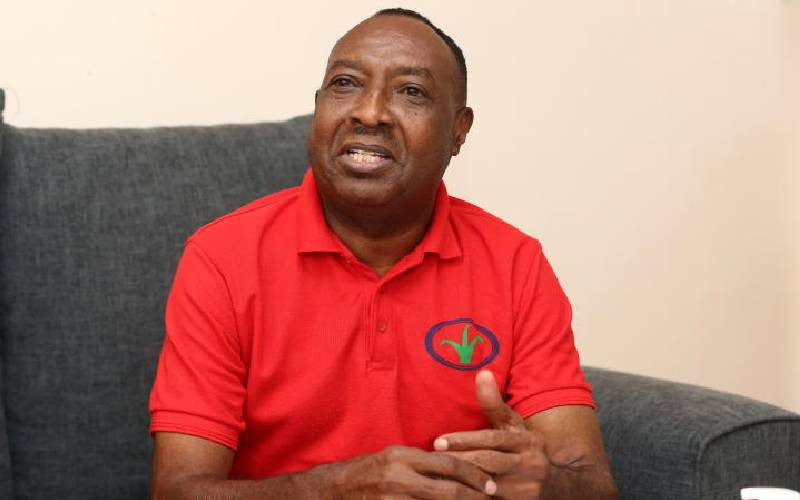
Embu, Mombasa and Nyeri have the most favourable health worker-population ratio, a new report shows.
According to the report, there is at least one health worker for 197 people in Embu County, one health staff for every 227 people in Mombasa County and one health employee for every 238 people in Nyeri County.
The reported titled “Where Is Your Doctor?”, also ranks Uasin Gishu and Isiolo counties among the top five counties with a favourable health worker-population ratio.
The survey funded by Hivos shows the skewed distribution of medical professionals has denied Kenyans an equal chance to quality healthcare. The study ranked Mandera, Turkana and Kisii among counties with the worst distribution of health workers.
In Mandera, for instance, there is only one health worker for every 2,456 people, while in Turkana and Kisii counties the ratio is 1:2,148 and 1:1,930 respectively.
According to the study, the distribution of health workers in Kajiado and Narok is also poor. In Kajiado, one health worker is expected to attend to 1,520 patients while in Narok the ratio is 1:1,373.
No county has so far met the required health staffing levels.
According to the World Health Organisation (WHO), availability of skilled and motivated health workers in sufficient numbers is critical in attaining better healthcare outcomes.
It has also emerged the doctor-patient ratio has widened in the past three years, an indication that the number of doctors entering and staying in the public health sector has been outpaced by population growth.
By end of 2011, Kenya had a doctor-population ratio of one doctor to 17,000, but a recent report by the Ministry of Health report suggests that the country has one medical officer for every 20,000 people.
It defines a medical officer as a doctor who is qualified but has no specialisation.
The Government of Kenya, 2014: Kenya Service Availability and Readiness Assessment Mapping (SARAM) also shows that there is only one registered clinical officer for every 10,000 people and a nurse for every 3,333 people.
The specialists-population ratio is even wider. WHO recommends that one doctor serves 1000 patients.
Latest data from the Medical Practitioners and Dentists Board (MPDU), which registers and regulates doctors, shows that there are 9119 registered doctors in the country.
But of this number, only 4821 are active. A list of the registered doctors is available on the Standard Digital website.
But the doctors union, the Kenya Medical Practitioners and the Pharmacists and Dentists Union (KMPDU), attribute the low retention of doctors in the public sector to poor remuneration and conditions of service.
Staffing crisis
“Our members are demoralised and it is just a matter of time before this becomes a crisis,” KMPDU Secretary General Sultan Matendechere said in an interview.
The union accuses the Government of failing to implement recommendations by the Musyimi Task Force Report on improvement of the welfare of health workers.
KMPDU has also been pushing for a Health Service Commission to champion the interests of its members. According to the doctors’ union, Kenya has so far lost 51 per cent of her doctors to countries offering better terms.
KMPDU says in 1999, Kenya had about 3,000 doctors in public service and has been training between 250 and 700 doctors per year (locally and abroad). However, by November 2011, the number of doctors in the public sector was only 2,334.
Up to 80 per cent of doctors are said to leave the public sector by the third year of service to either work in the private sector or seek greener pastures in other countries. Botswana and South Africa are the biggest beneficiaries of this brain drain, with Britain, US, Australia, Canada and France also being favourite destinations for the medics.
By end of last year, the country had 67,075 health workers in total, serving a population of over 43.7 million people.
According to SARAM, 56 per cent of the total health work force are females, with the highest concentration in the nursing, clerks, medical social workers and supportive staff cadres.
“Major disparities were in economists, occupational therapists, medical engineering, environmental health and drivers with more than two thirds in one gender or sex,” the SARAM report, funded by the World Health Organisation (WHO) and the British government, says in part.
It adds: “Most of the specialisations were general physicians, pharmacists, public health specialists and midwifery across all counties. It is important to note that some specialisations were not found in some counties.”
The SARAM survey mapped health services to assess the capacity for service provision, sector investments and readiness to provide services.
 The Standard Group Plc is a multi-media organization with investments in media platforms spanning newspaper print
operations, television, radio broadcasting, digital and online services. The Standard Group is recognized as a
leading multi-media house in Kenya with a key influence in matters of national and international interest.
The Standard Group Plc is a multi-media organization with investments in media platforms spanning newspaper print
operations, television, radio broadcasting, digital and online services. The Standard Group is recognized as a
leading multi-media house in Kenya with a key influence in matters of national and international interest.











